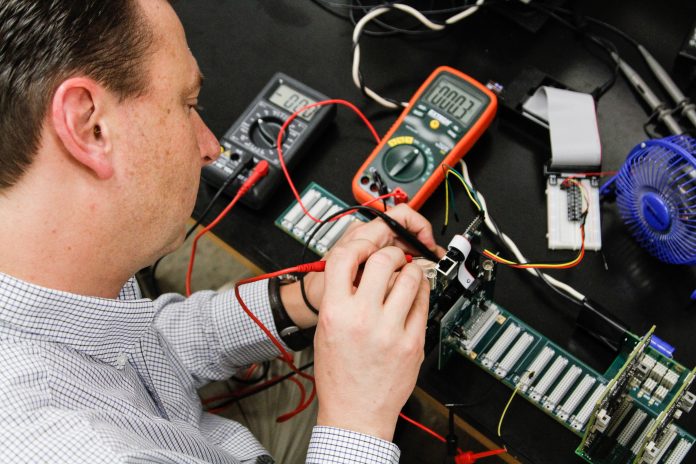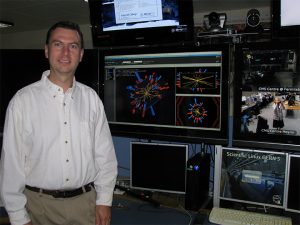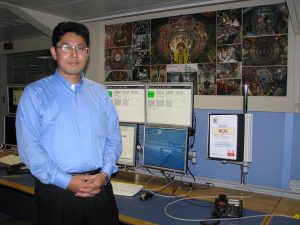
By Jacquelyn Kellar | Lariat Reporter
Life is biology; biology is chemistry; chemistry is physics. Therefore, physics is life. That’s exactly the attitude these two associate physics professors Dr. Jay Dittmann and Dr. Kenichi Hatakeyama had during their contributions to the Nobel Prize- winning research that led to the discovery of the Higgs boson.
Dittmann and Hatakeyama were brought on board the European Organization for Nuclear Research in Geneva, Switzerland, to work on the Large Hedron Collider, a four-story tall machine residing 100 meters underground that makes it possible for protons to collide at 7 TeV, or 7 trillion electron volts. The energy of one proton is just 0.938 GeV, or 938 million volts. The energy emitted by these colliding particles is massive, and the LHC has the potential for even more. The protons are formed and launched in a beam that travels in an underground circular track measuring 27 kilometers in circumference, gaining speed until they meet in the middle of the LHC.
Work on this machine is part of a larger experiment, the Compact Muon Solenoid experiment. Its goal is to detect the presence of the Higgs boson, a once-theoretical particle that had, until recently, eluded scientists. Until the discovery of the particle, what actually gave elements their specific mass was a mystery. Physicists speculated that the Higgs particle, an idea created by Peter Higgs, was responsible for giving elements mass.
To prove this theory, hundreds of physicists worked on the Compact Muon Solenoid experiment, launching particles at each other countless times a day. If they were lucky, the Higgs particle would present itself once, maybe twice per week. Working on the CMS experiment is patient work, especially when the entire day is spent more than 100 meters underground.
Although elusive, it was not invisible. They gathered enough evidence to support the theory and earned a Nobel Prize for finally bringing to light an idea that had remained in the dark since the birth of the periodic table of elements.
What does this monumental discovery mean for the future of physics? The truth is, the answer will remain unknown for some time. The Higgs particle could be a stepping stone to understanding the nature of dark matter in space, but its individual meaning and bigger purpose could still be unidentified.
“With some information from the Higgs boson, we can improve some parts of other theories and try to answer other questions like the one we are working on now, which is ‘what is dark matter?’” said Dittmann. “Right now, we understand 5 percent of matter in the universe, the matter we can actually see. There’s 95 percent that we can’t and are trying to understand. The Higgs discovery is just one aspect of this bigger theory that hopefully explains dark matter as well as other puzzles and mysteries.”
For Dittmann and Hatakeyama, it’s a personal stepping stone to their future. A Nobel Prize isn’t just an achievement to add to their long list of accolades. The two physicists have a “what’s next?” mentality, hungry to move on to the next challenge.
“They announced the discovery and published the paper, but we continued to look ahead and think about what we could do next,” said Hatakeyama. “We don’t have a clue about how to explain what dark matter is made of, and since the Higgs discovery, we are now focusing on the most important question of how to understand dark matter better. We keep going to find new questions and try to find answers.”
The road to understanding the vast universe is long. However, after the discovery of the Higgs boson, Dittmann and Hatakeyama are well on their way to shortening the trip.
“Scientists are driven by the puzzles associated with these questions and the challenges of solving them,” said Dittmann. “We just want to understand the universe better.”
The Higgs boson gets its name from Peter Higgs, a theoretical physicist who won a Nobel Prize in 2013 for his work in the 1960s. He proposed the idea that one mechanism could be responsible for the origin of mass in subatomic particles. The discovery is attributed to his theories, for without them, this experiment would not have existed or come to fruition.






